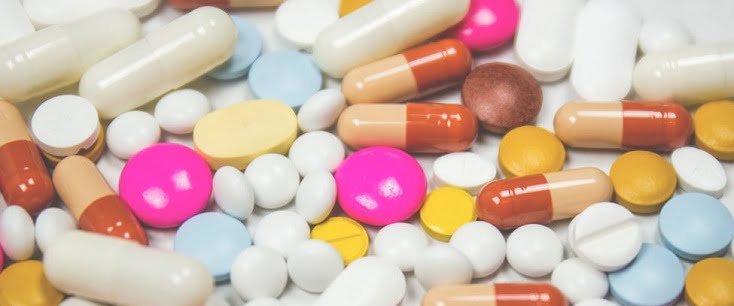Your cart is currently empty!
Anti-malaria drugs Chloroquine/Hydroxychloroquine have received a lot of attention in the media as a possible treatment for COVID-19. This article explains what you need to know about these drugs.

Figure 1: Cinchona flower and bark
Facts
- Discovered in 1630, Chloroquine (Aralen) and Hydroxychloroquine
(Plaquenil) are man-made drugs derived from the bark of cinchona or fever tree - They are prescription-only oral drugs approved
by the FDA to treat malaria, lupus and rheumatoid arthritis - There is no clinical evidence of their effectiveness
against COVID-19: clinical trials are still ongoing - Both Chloroquine and Hydroxychloroquine can stay
in the blood for up to half a year after discontinued use, cross the placenta
and be transferred in breast milk - We still do not fully understand how they work
and their dose-related toxicity
History of Chloroquine and Hydroxychloroquine
Chloroquine and Hydroxychloroquine were first discovered in 1630 from the bark of cinchona (or fever tree) as the natural chemical called ‘quinine’ to treat malaria.
In 1934, scientists developed the first man-made drug for malaria based on the properties of quinine, called Chloroquine. Chloroquine (Aralen) was approved in 1949 by the Food and Drug Administration (FDA) for medical use.
In 1950-1955, a similar compound – Hydroxychloroquine (Plaquenil) – was manufactured and then approved by the FDA.
In the 1960’s, science discovered other medicinal properties of Chloroquine and Hydroxychloroquine. That led to the subsequent FDA approval of these drugs to treat lupus and rheumatoid arthritis.

Figure 2: History of Chloroquine/Hydroxychloroquine
How Chloroquine/Hydroxychloroquine work
Chloroquine/Hydroxychloroquine work by killing the parasites that cause the disease rather than treating symptoms. Though the exact mechanism of action is not yet fully understood.
Both Chloroquine and Hydroxychloroquine are available as prescription-only oral tablets, with long half-lives. So, they stay in the blood for a long time (up to half a year) after you stop using the drugs.
Side effects, interaction with other drugs, pregnancy and breastfeeding risks
Once Chloroquine/Hydroxychloroquine enter the body, they are broken down by the same enzyme (CYP450) that breaks down other drugs. This means taking Chloroquine and Hydroxychloroquine with other drugs can affect how they are used by the body, thus posing a risk. For example:
- Chloroquine/Hydroxychloroquine slow down the effect on the body of heart disease medications (e.g., digitoxin), blood pressure drugs (e.g., metoprolol), and psoriasis and arthritis medications (e.g., methotrexate)
- Hydroxychloroquine can also increase the risk of eye toxicity when prescribed together with some anti-cancer agents (e.g., tamoxifen – used for breast cancer treatment)
- Drugs that increase the stomach acidity (or reduce pH) including proton-pump inhibitors (e.g., aspirin) may reduce the effect of Chloroquine/Hydroxychloroquine

Figure 3: Structures of Quinine, Chloroquine and Hydroxychloroquine
Notably, Chloroquine/Hydroxychloroquine can cross the placenta and be transferred in breast milk. Although they are considered safe to use during pregnancy and breastfeeding, the long-term side effects are yet to be confirmed.
Therefore, Chloroquine/Hydroxychloroquine are expected to have side effects. Some common side effects include nausea, vomiting, loss of appetite, diarrhea, dizziness, or headache.
Other less common (< 10%) but more serious side effects include irregular heartbeat, low blood sugar, anxiety, confusion, hallucinations and paranoia. Overdose can also cause seizures, coma and heart attack.
Chloroquine/Hydroxychloroquine and COVID-19
Chloroquine/Hydroxychloroquine have been used for over 300 years to treat malaria. There is currently no clinical evidence that they are effective against COVID-19. However, recent laboratory tests have shown that Chloroquine could effectively reduce COVID-19 infection. Currently, 79 different clinical trials worldwide are ongoing to assess their effectiveness in COVID-19 patients.
Other articles written by this author:




